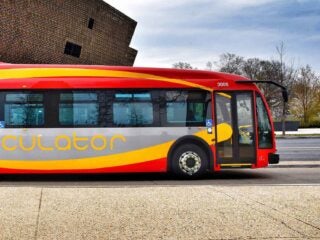- Resources
- The promise of vehicle-based pollution mapping
Resources
The promise of vehicle-based pollution mapping
Published: November 16, 2019 by EDF Staff
Ordinary fleet vehicles doing their normal jobs in your city have hidden potential to save lives and shape actions that protect health and the climate. This superpower comes from advanced mobile air pollution sensors paired with connected vehicle technologies that allow cities to map pollutants at a hyperlocal scale.
Air quality can be eight times worse at one end of a block than another. Living on the more polluted end can significantly increase the risk of asthma and heart attack. The way we currently track and measure air pollution, with stationary sensors spaced miles apart atop buildings, simply can’t give decision-makers enough data to guide solutions.
A new feasibility analysis from EDF and connected transportation expert Geotab shows that public and private fleets can provide urgently needed data. In fact, it doesn’t take many vehicles to do so. We found that 10-20 vehicles can map 50% to 70% of a city without changing their routes. The opportunity here is huge. Cities are the future of our economy and of environmental innovation, and with hyperlocal mapping, leaders can design – and see the results of – climate and clean air investments that maximize local impact.
Whether you’re a public or private sector leader, a tech company or an analytics firm, this is how you can improve individual lives and entire communities. Become a champion for healthy, smart cities – learn how you can pilot fleet-based air pollution mapping in your city or accelerate IoT solutions.
